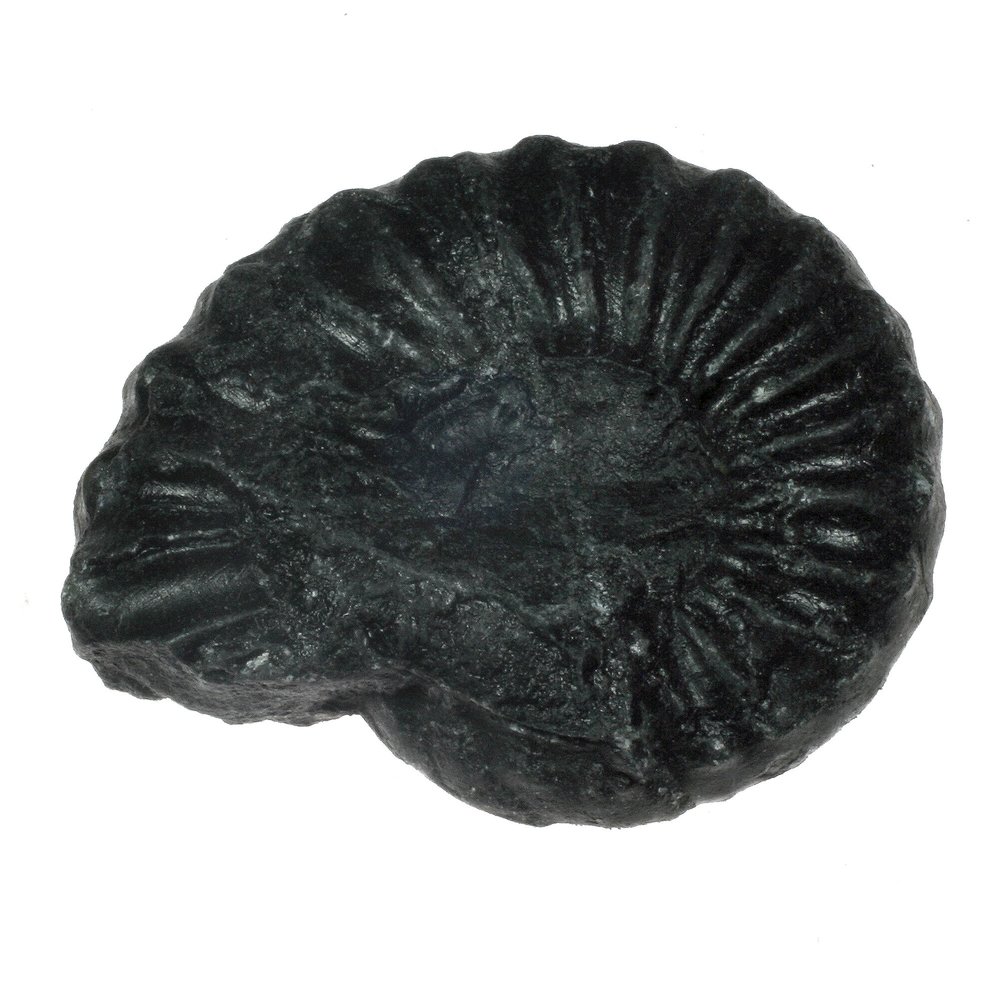
The sediment on the water floors allows for careful preservation of the ammonite shell after fossilization occurs. When an ammonite dies, the shell drops down to the floor of rivers, lakes, and oceans. Check out our ammonite fossil collection and browse the uniqueness of this prehistoric water mollusk. At Whaler’s Locker, our ammonite fossils boast a variety of shapes, colors, and designs. Whether you are a fossil enthusiast or interest in prehistoric organisms, all can appreciate these ammonite shells. The coiled shell is most commonly what we find preserved as fossils. These shells and unique patterns of ammonites make them easily admirable. These different ammonite shell shapes provide insight into the different and many evolutions the ammonite underwent. Some ammonite’s shells curved wildly without a pattern. Ammonite shells' shapes can vary so much that one species is similar in shape to a snail, and another species' shell can be straight like a hairpin.

There are many different shapes present in ammonite shells from straight, coiled, and even partially coiled. As the ammonites mature, their shell becomes more straight and then undergoes a curvature. The type of shell we most recognize as belonging to ammonites is a planispiral shell. To learn more about the ammonite evolution, check out a timeline that captures the organisms evolving life from over 400 million years ago. Ammonite fossils are one of the most common types of fossils found, but each fossil is unique in its way. Regardless of the extinction of ammonites, these mollusks left a trail of their history all over the earth in fossil form. Some scientists believe that these prehistoric organisms could survive for so long due to plankton's presence and availability through certain seas in which the ammonite roamed. Experts estimated that over 10,000 different species of ammonites existed before their extinction. These species had a shorter lifespan, but these organisms were able to thrive for millions of years because of their ability to frequently adapt and evolve. A more enhanced structure formed of the ammonite exists through the Triassic and Cretaceous periods as well. Geological TimestampĪmmonites made their appearance on earth over 400 million years ago but disappeared before the mass extinction over 66 million years ago, with the first ammonites appearing in the Paleozoic Era. The physical makeup of ammonites allowed these small organisms to function well and survive through several prehistoric eras. An outer shell allowed these organisms to use water propulsion to move about in the water. These carnivorous mollusks eventually began to hunt other cephalopods as well. Size - From less than an inch to more than nine feet in diameterĪmmonites developed their outer shell as a defense mechanism to protect themselves while hunting fish in the shallow waters they roamed.Patterns - Intricate patterns point to specific ammonite species.Septa - Lines that separate the body chambers.These physical features of ammonites will help you to spot a fossil in the present day: Some common modern-day cephalopods include squid, octopus, and cuttlefish. Ammonites are classified as cephalopods and have tentacles that are attached to their head.

These water mollusks protect their invertebrate with a shell and mantle. These organisms are a soft-bodied invertebrate that protects themselves from predators with their thick shells. What Are Ammonites?Īmmonites are a prehistoric marine mollusk that roamed millions of years ago. Let’s learn all about the ancient cephalopod that is the ammonite. Aside from the ammonite shell's beauty, we can enjoy the preserved fossils for their ancient beauty and uniqueness. Whether on display in your home or worn as jewelry, these ammonite fossils are a beautiful sight to observe. You don’t have to be a fossil enthusiast to appreciate these fossilized creatures' beauty and wonder which existed millions of years ago. The unique characteristics of each ammonite fossil make this piece of the prehistoric world even more admirable. The shell these ammonites leave behind are showstopping in shape, size, and color. In the ammonites, these organisms existed even before the dinosaurs, which makes these ancient fossils so intriguing. Fossils are a marvelous way to admire a piece of history while also learning about the creatures that dwelled before us.

There are so many parts of the prehistoric world that are left unknown or forgotten, but with the presence of fossils, we can learn more about ancient organisms and understand more about them. ApOur Favorite Fossil Jewelry: Megalodon Teeth, Parotodus Benedeni Teeth, Ammonites, and More.ApHow to Unblock Your Chakras with Healing Stones.The Fascinating History of Healing Crystals.


 0 kommentar(er)
0 kommentar(er)
